A Feasibility Study on the Application of Basic Oxygen Furnace (BOF) Steel Slag for Railway Ballast Material
Abstract
:1. Introduction
2. Theoretical Background
2.1. Current Status of Steel Industry Slag Generat Ion and Recycling
2.2. Standards for Railway Ballast Material
3. Physical and Chemical Quality Test Methods
3.1. Overivew
3.2. Test Methods and Standards
4. Physical and Chemical Quality Test Results
4.1. Physical Quality Test Results
- F: Lateral resistance for each railway sleeper (kg)
- W: Weight of railway sleeper (kg)
- : Unit weight of ballast (kg/cm3)
- : First moment on the end face of railway sleeper (cm3)
- : First moment on the side face of railway sleeper (cm3)
- a, b, c: Coefficients for each railway type (See Table 3).
4.2. Chemical Quality Test Results
5. Conclusions
- The unit weight of the BOF slag (i.e., average value of 19.7 kN/m3) was much higher than that of natural aggregate (i.e., average value of 16.0 kN/m3). Thus, it is expected that the BOF slag as the railway ballast material reveals higher resistance against lateral pressure caused by the centrifugal force on curved track than natural aggregate.
- From abrasion and hardness tests, the wear rate of the BOF slag was approximately 25% lower than that of natural aggregate and hardness of the BOF slag was 30 to 40% larger than that of the natural aggregate. It appears that the BOF slag as the railway ballast material is beneficial in terms of the maintenance of a railway ballast due to a greater abrasion resistance and hardness under repeated train loading than that of currently used natural ballast.
- From unconfined compressive tests, the test results presented that the unconfined compressive strength of the BOF slag was 220%, and 125 to 188% larger than that of KRSC standard and natural aggregate, respectively. It is expected that the BOF slag as the railway ballast material reduces the particle breakage of coarse aggregates and excessive deformation of the railway ballast.
- From the immersion expansion test, the produced expansion ratios of 0.58 to 0.84% sufficiently met the KRSC standard (i.e., less than 1.5%).
- For the aging effect, it was noted that three different aging periods had little effect on the changes of physical properties, and the aging effect can be ignored up to six months with the test sample. However, the steel slag may be expanded over long periods such as several years due to the expansion behavior of free MgO, which could be considered as a future research topic.
- For chemical quality test and the test for harmful substances in aggregates, no particular problems were detected in the test sample while further specific leaching test for the BOF slag could be considered as a future research topic to comply with environmental requirements before actual application of the BOF slag as railway ballast material.
Acknowledgments
Author Contributions
Conflicts of Interest
References
- Koh, T.; Hwang, S. Field evaluation and durability analysis of an eco-friendly prestressed concrete sleeper. J. Mater. Civ. Eng. 2014, 27, B4014009. [Google Scholar] [CrossRef]
- Faleschini, F.; Pellegrino, C. Experimental behavior of reinforced concrete beams with electric arc furnace slag as recycled aggregate. ACI Mater. J. 2013, 110, 197–206. [Google Scholar]
- Faleschini, F.; Fernández-Ruíz, M.A.; Zanini, M.A.; Brunelli, K.; Pellegrino, C.; Hernández-Montes, E. High performance concrete with electric arc furnace slag as aggregate: Mechanical and durability properties. Constr. Build. Mater. 2015, 101, 113–121. [Google Scholar] [CrossRef]
- Manso, J.M.; Polanco, J.A.; Losanez, M.; González, J.J. Durability of concrete made with EAF slag as aggregate. Cem. Concr. Compos. 2006, 28, 528–534. [Google Scholar] [CrossRef]
- NSA. Steel Furnace Slag, an Ideal Railroad Ballast; Report NSA; National Slag Association: Pleasant Grove, UT, USA, 2001; p. 173.
- Jones, R.T. Economic and environmentally beneficial treatment of slags in DC arc furnaces. In Proceedings of the VII International Conference on Molten Slags, Fluxes and Salts, Cape Town, South Africa, 25–28 January 2004; The South African Institute of Mining and Metallurgy: Johannesburg, South Africa, 2004; pp. 363–376. [Google Scholar]
- Pellegrino, C.; Gaddo, V. Mechanical and durability characteristics of concrete containing EAF slag as aggregate. Cem. Concr. Compos. 2009, 31, 663–671. [Google Scholar] [CrossRef]
- USGS. Mineral Commodity Summaries 2017; US Geological Survey: Reston, VA, USA, 2017; p. 202.
- ASA. Available online: http://www.asa-inc.org.au (accessed on 22 January 2018).
- KOSA. Available online: http://www.kosa.or.kr (accessed on 22 January 2018).
- NSA. Available online: http://www.slg.jp/e (accessed on 22 January 2018).
- USGS. Available online: http://www.usgs.gov (accessed on 22 January 2018).
- Korea Rail Corporation Standard—Railway Ballast Material, KRCS A015 04. 2011; 1–11. (In Korean)
- Yildirim, I.Z.; Prezzi, M. Use of Steel Slag in Subgrade Applications; FHWA/IN/JTRP-2009-32/SPR-3129, Joint Transportation Research Program; Purdue University: West Lafayette, IN, USA, 2009. [Google Scholar]
- Ramachandran, V.S.; Sereda, P.J.; Feldman, R.F. Mechanism of hydration of calcium oxide. Nature 1964, 201, 288–299. [Google Scholar] [CrossRef]
- Shi, C. Steel Slag—Its Production, Processing, Characteristics, and Cementitious Properties. J. Mater. Civ. Eng. 2004, 16, 230–236. [Google Scholar] [CrossRef]
- Wang, G. Determination of expansion force of steel slag coarse aggregate. Constr. Build. Mater. 2010, 24, 1961–1966. [Google Scholar] [CrossRef]
- Zhao, J.; Yan, P.; Wang, D. Research on mineral characteristics of converter steel slag and its comprehensive utilization of internal and external recycle. J. Clean. Prod. 2017, 156, 50–61. [Google Scholar] [CrossRef]
- Wang, G.; Yuhong, W.; Zhili, G. Use of steel slag as a granular material: Volume expansion prediction and usability criteria. J. Hazard. Mater. 2010, 183, 555–560. [Google Scholar] [CrossRef] [PubMed]
- Kalyoncu, R.S. Slag-Iron and Steel; US Geological Survey Minerals Yearbook; USGS: Reston, VA, USA, 2001.
- Moon, H.Y.; Yoo, J.H. Effect of Aging Process to Use Steel Slag for Concrete Aggregate. In Proceedings of the 6th International Symposium of East Asian Resources Recycling Technology, Gyeongju, Korea, 23–25 October 2001; pp. 520–525. [Google Scholar]
- Sasaki, T.; Hamazaki, T. Development of Steam-Aging Process for Steel Slag; Nippon Steel & Sumitomo Metal Technical Report; Nippon Steel & Sumitomo Metal: Tokyo, Japan, 2015; pp. 23–26. [Google Scholar]
- Dziarmagowski, M. Possibilities of converter slag utilization. Arch. Metall. Mater. 2005, 50, 769–782. [Google Scholar]
- Mihok, Ľ.; Demeter, P.; Baricova, D.; Seilerova, K. Utilization of ironmaking and steelmaking slags. Metalurgija 2006, 45, 163–168. [Google Scholar]
- Standard Test Method for Bulk Density (“Unit Weight”) and Voids in Aggregate; ASTM C29/C29M-17a; ASTM International: West Conshohocken, PA, USA, 2017.
- Standard Test Method for Resistance to Degradation of Large-Size Coarse Aggregate by Abrasion and Impact in the Los Angeles Machine; ASTM C535-16; ASTM International: West Conshohocken, PA, USA, 2016.
- Standard Test Method for Rubber Property—Durometer Hardness; ASTM D2240-15; ASTM International: West Conshohocken, PA, USA, 2015.
- Standard Test Method for Compressive Strength of Dimension Stone; ASTM C170/C170M-17; ASTM International: West Conshohocken, PA, USA, 2017.
- Iron and Steel Slag for Road Construction; JIS A 5015; Japanese Standards Association: Tokyo, Japan, 2013.
- Standard Test Method for Clay Lumps and Friable Particles in Aggregates; ASTM C142/C142M-17; ASTM International: West Conshohocken, PA, USA, 2017.
- Standard Test Method for Clay Lumps and Friable Particles in Aggregates; ASTM C123/C123M-14; ASTM International: West Conshohocken, PA, USA, 2014.
- Standard Method of Test for Scratch Hardeness of Coarse Aggregate Particles; AASHTO T 189-70; American Association of State Highway and Transportation Officials: Washington, DC, USA, 1982.
- Standard Test Method for Potential Expansion of Aggregates from Hydration Reactions; ASTM D4792/D4792M-13; ASTM International: West Conshohocken, PA, USA, 2013.

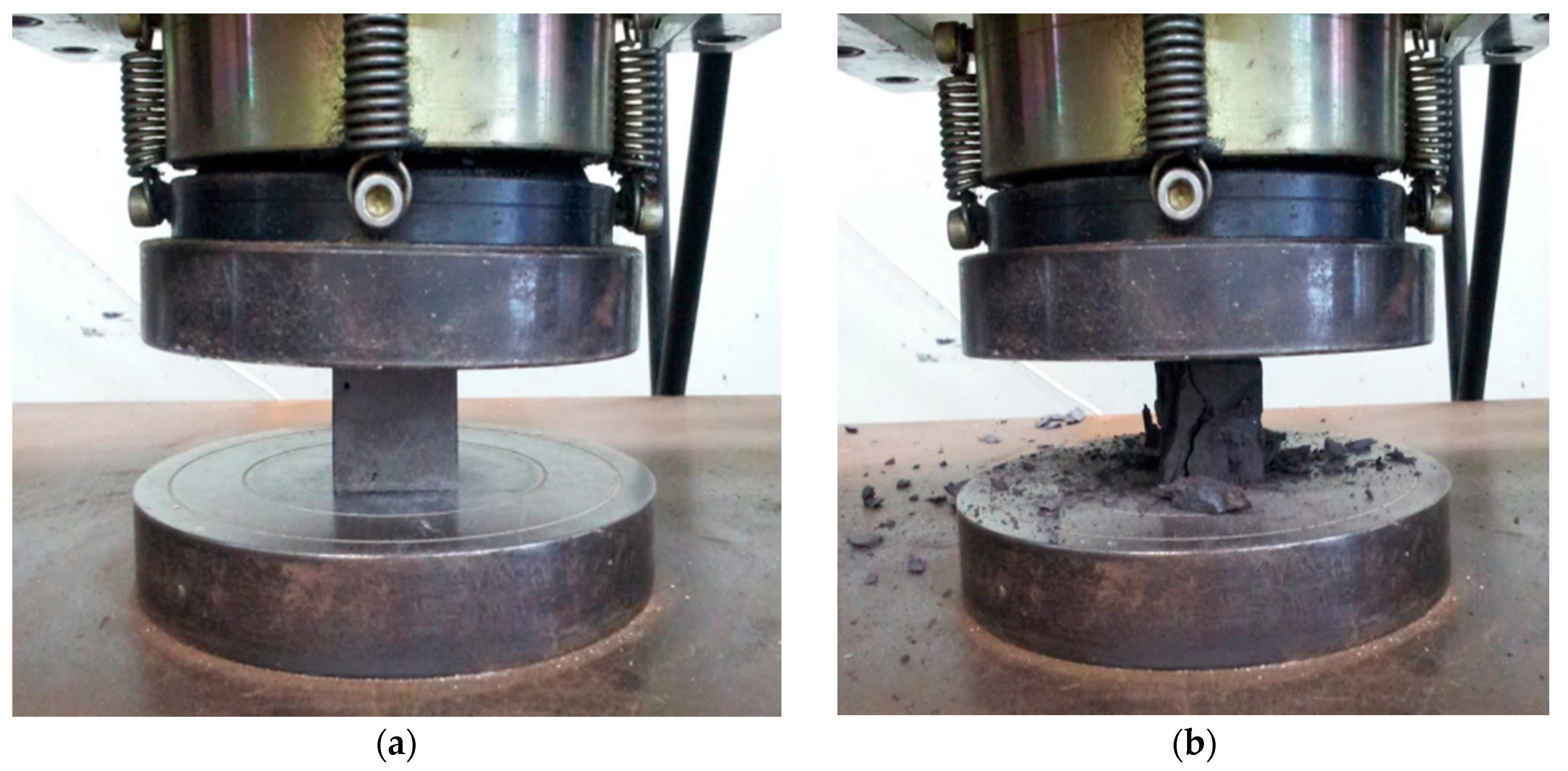

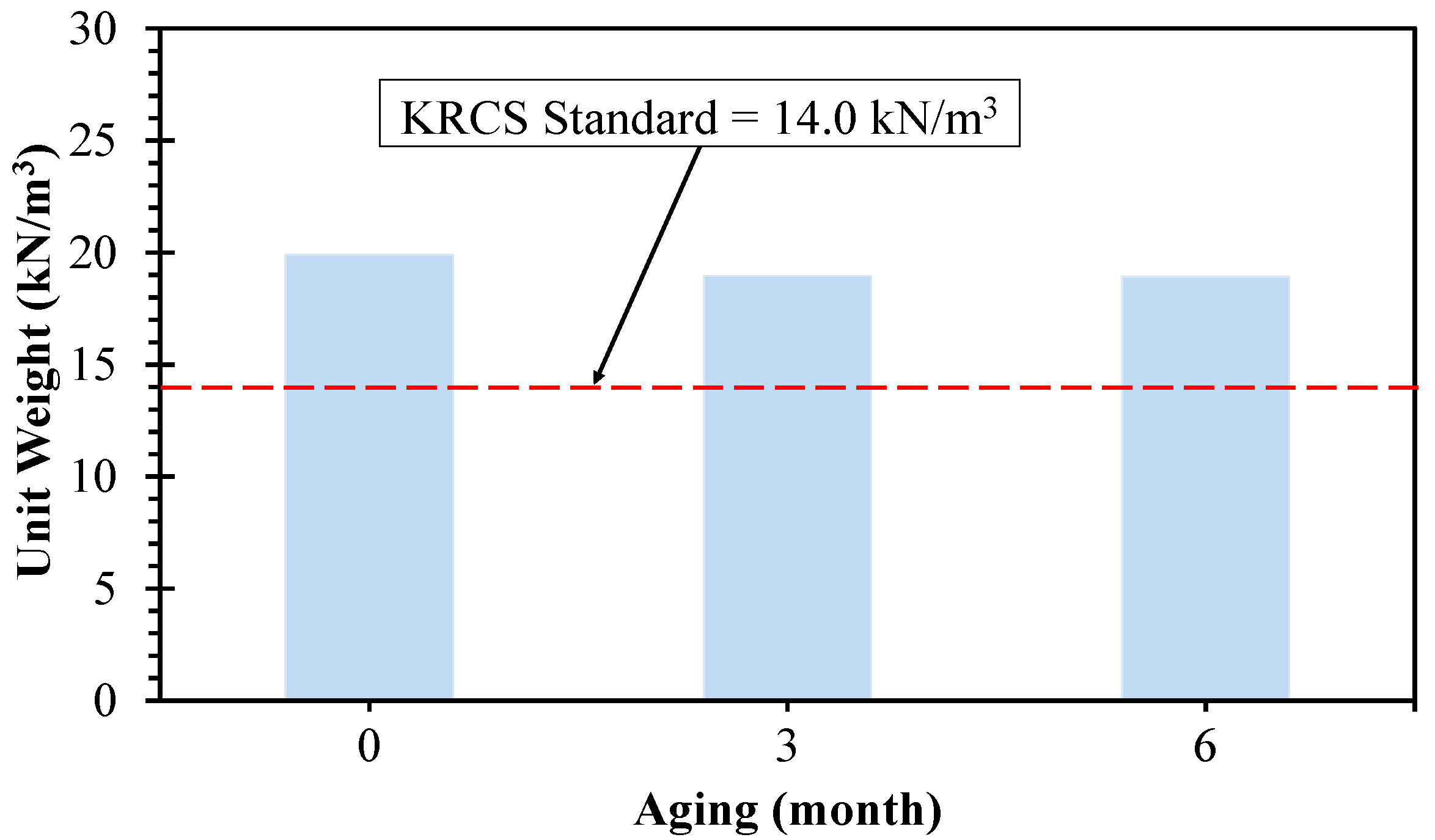
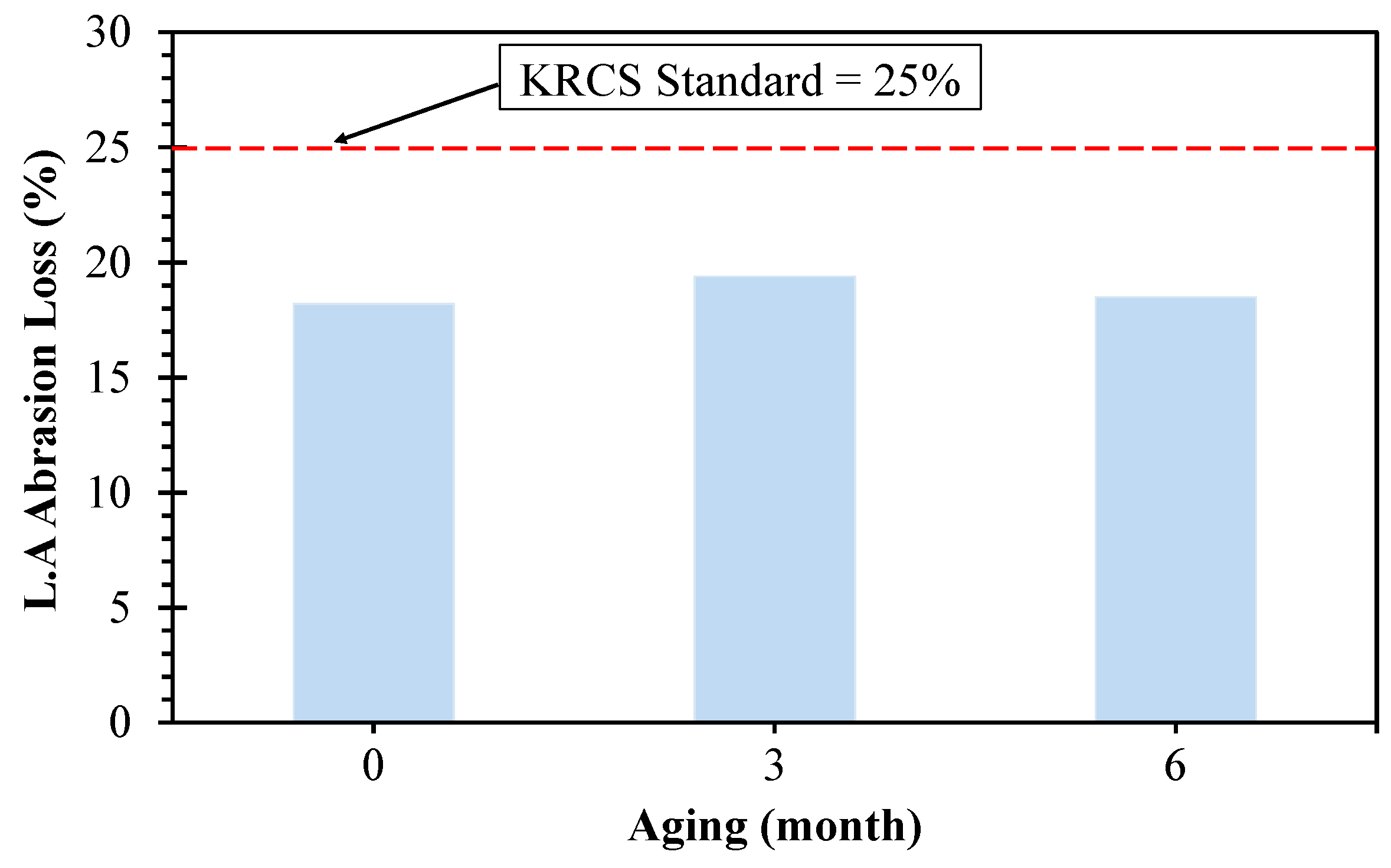
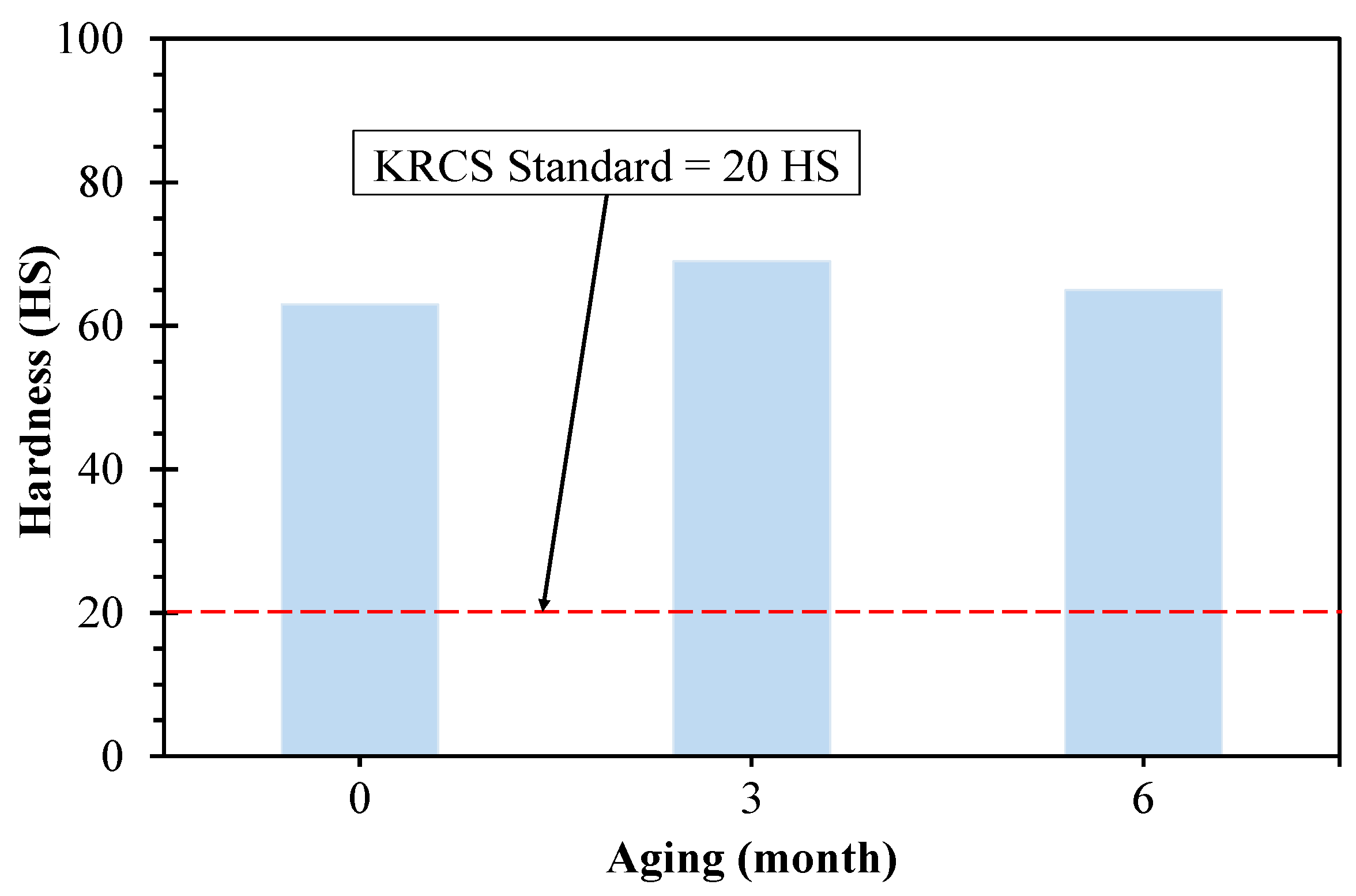
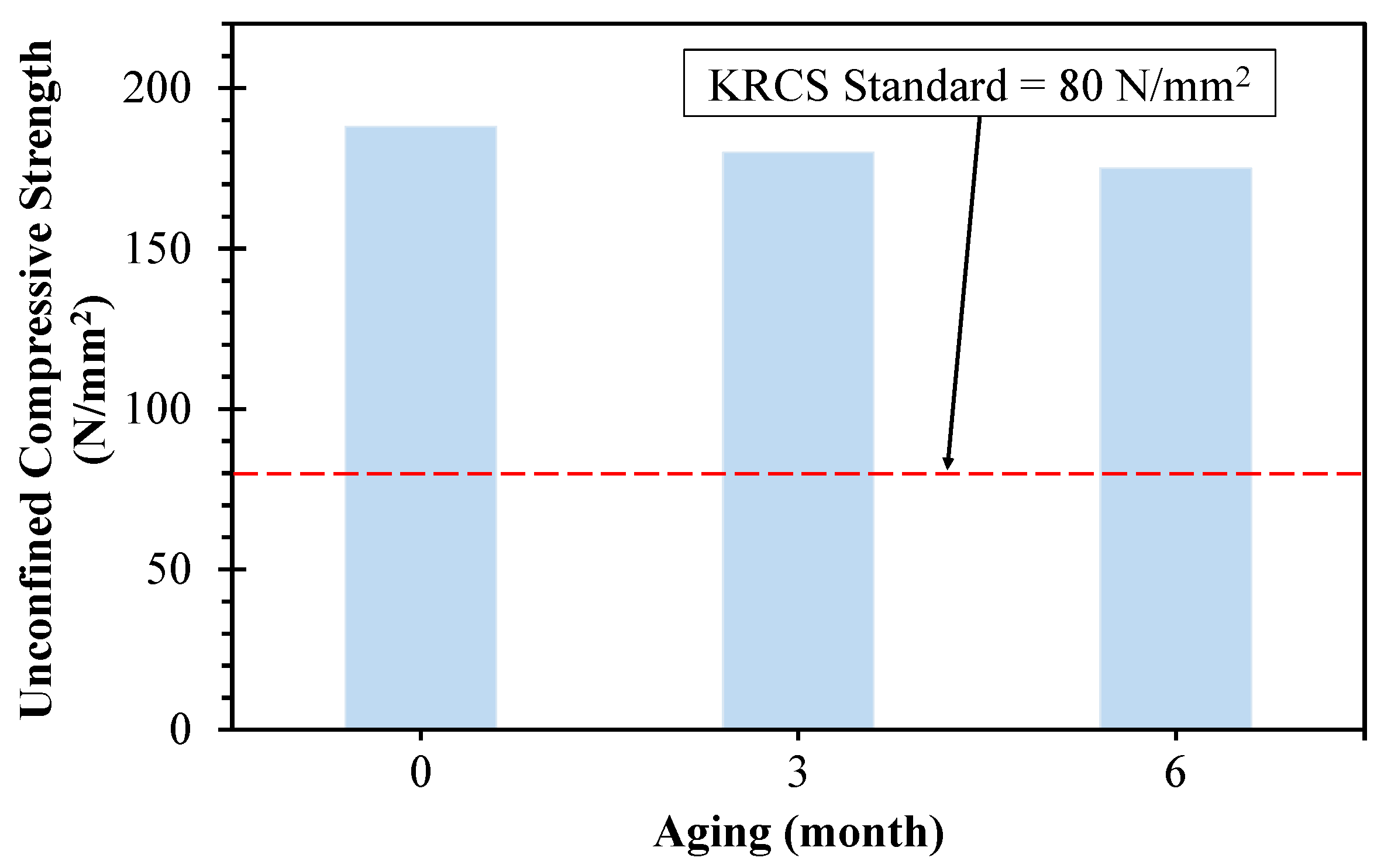
| Classification | Criteria | Test Methods | |
|---|---|---|---|
| Unit weight | Higher than 14 kN/m3 | ASTM C29 | |
| Abrasion | Less than 25% | ASTM C535-16 | |
| Hardness | Higher than 20 | ASTM D2240 | |
| Compressive strength | Higher than 80 N/mm2 | ASTM C170 | |
| Immersion expansion | Less than 1.5% | JIS A 5015 | |
| Contents of harmful materials | Clay | Less than 3.5% | ASTM C 142 |
| Coal and brown coal | ASTM C123 | ||
| Soft fragments | AASHTO T 189-70 | ||
| Ballast Property | Australia | USA | Canada | UK | Korea |
|---|---|---|---|---|---|
| Aggregate Crushing Value | <25% | - | - | <22% | - |
| Los Angeles Abrasion | <25% | <40% | <20% | <20% | <25% |
| Flakiness Index | <30% | - | - | <35% | - |
| Misshapen Particles | <30% | - | <25% | - | - |
| Sodium Sulphate Soundness | - | <10% | <5% | - | - |
| Magnesium Sulphate | - | N/A | <10% | - | - |
| Soft and Friable Pieces | - | <5% | <5% | - | - |
| Fines (<No. 200 sieve) | - | <1% | <1% | - | <1% |
| Clay Lumps | - | <0.5% | <0.5% | - | - |
| Bulk Unit Weight (kg/m3) | >1200 | >1120 | - | - | >1400 |
| Particle Specific Gravity | >2.5 | - | >2.6 | - | - |
| Type | a | b | c |
|---|---|---|---|
| PSC railway sleeper—crushed gravel | 0.75 | 29 | 1.8 |
| Wooden railway sleeper—crushed gravel | 0.75 | 29 | 1.3 |
| Wooden railway sleeper—worn gravel | 0.6 | 29 | 1.4 |
| Type | Aging Periods (Month) | Natural Railway Ballast | KRCS (2011) [10] | ||||||||
|---|---|---|---|---|---|---|---|---|---|---|---|
| 0 | 3 | 6 | |||||||||
| 1st Trial | 2nd Trial | Ave. | 1st Trial | 2nd Trial | Ave. | 1st Trial | 2nd Trial | Ave. | |||
| Unit weight (kN/m3) | 20.33 | 20.30 | 20.31 | 19.36 | 19.32 | 19.35 | 19.22 | 19.37 | 19.30 | 15.50−16.50 | >14.0 (kN/m3) |
| Abrasion (%) | 18.2 | 18.3 | 18.2 | 19.3 | 19.5 | 19.4 | 18.4 | 18.6 | 18.5 | 21~27 | <25 (%) |
| Hardness (HS) | 60 | 65 | 63 | 68 | 69 | 69 | 64 | 66 | 65 | 40–50 | >20 (HS) |
| Compressive strength (N/mm2) | 185 | 192 | 188 | 186 | 174 | 180 | 170 | 180 | 175 | 100–140 | >80 (N/mm2) |
| Immersion expansion in water (%) | 0.84 | 0.83 | 0.84 | 0.86 | 0.85 | 0.86 | 0.56 | 0.60 | 0.58 | - | <1.5 (%) |
| Item | Criteria | Aging Periods (Month) | ||
|---|---|---|---|---|
| 0 | 3 | 6 | ||
| Lead | <3 mg/L | N.D. | N.D. | N.D. |
| Copper | <3 mg/L | N.D. | 0.003 | 0.007 |
| Arsenic | <1.5 mg/L | N.D. | N.D. | 0.001 |
| Cadmium | <0.3 mg/L | 0.007 | 0.009 | 0.006 |
| Mercury | <0.005 mg/L | N.D. | N.D. | N.D. |
| Organophosphorus compounds | <1 mg/L | N.D. | N.D. | N.D. |
| Tetrachlorethylene | <0.1 mg/L | N.D. | N.D. | N.D. |
| Trichloroethylene | <0.3 mg/L | N.D. | N.D. | N.D. |
| Cyanogen | <1 mg/L | N.D. | N.D. | 0.35 |
| Hexavalent chromium | <1.5 mg/L | N.D. | N.D. | 0.03 |
| Oil | <5% | N.D. | N.D. | N.D. |
© 2018 by the authors. Licensee MDPI, Basel, Switzerland. This article is an open access article distributed under the terms and conditions of the Creative Commons Attribution (CC BY) license (http://creativecommons.org/licenses/by/4.0/).
Share and Cite
Koh, T.; Moon, S.-W.; Jung, H.; Jeong, Y.; Pyo, S. A Feasibility Study on the Application of Basic Oxygen Furnace (BOF) Steel Slag for Railway Ballast Material. Sustainability 2018, 10, 284. https://doi.org/10.3390/su10020284
Koh T, Moon S-W, Jung H, Jeong Y, Pyo S. A Feasibility Study on the Application of Basic Oxygen Furnace (BOF) Steel Slag for Railway Ballast Material. Sustainability. 2018; 10(2):284. https://doi.org/10.3390/su10020284
Chicago/Turabian StyleKoh, Taehoon, Sung-Woo Moon, Hyuksang Jung, Yeonung Jeong, and Sukhoon Pyo. 2018. "A Feasibility Study on the Application of Basic Oxygen Furnace (BOF) Steel Slag for Railway Ballast Material" Sustainability 10, no. 2: 284. https://doi.org/10.3390/su10020284






